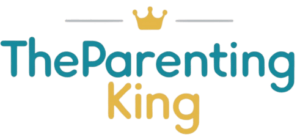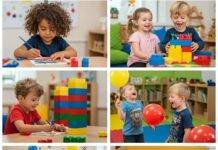As parents, caregivers, and educators, we all strive to nurture positive behaviors in children. But sometimes, the go-to methods of scolding or punishment can feel draining and, frankly, ineffective in the long run. That’s where the magic of positive reinforcement comes in. Instead of focusing on what kids shouldn’t do, positive reinforcement highlights and rewards the behaviors we want to see, making it a powerful tool for shaping young minds. This blog post dives into 33 practical positive reinforcement examples that you can easily integrate into your daily interactions with children, creating a more harmonious and encouraging environment.
Understanding Why Positive Reinforcement Examples are Effective
Positive reinforcement is a simple yet profound concept in behavioral psychology. It involves presenting a pleasant consequence after a desired behavior occurs, making it more likely that the child will repeat that behavior in the future. Think of it as a positive feedback loop. When a child does something good and receives positive attention or a reward, their brain associates that action with a positive feeling, motivating them to do it again. Exploring different positive reinforcement examples can unlock powerful ways to guide children.
Why is this approach so beneficial in child development? It builds self-esteem, strengthens the bond between adult and child, and clearly communicates expectations in a supportive way. It shifts the focus from what’s wrong to celebrating successes, big or small, through the use of positive reinforcement examples.
A Practical Toolkit of 33 Positive Reinforcement Examples
Here are 33 actionable positive reinforcement examples, categorized for easier application in various situations:
The Impact of Your Words: Verbal Positive Reinforcement Examples
Specific and heartfelt praise can be a powerful motivator for young ones, serving as excellent positive reinforcement examples.
- “I love how you helped your sibling clean up. That was so kind!” (Specific praise for kindness)
- “You did a fantastic job sharing your toys. Thank you!” (Specific praise for sharing)
- “Wow, you focused really well on your homework. I’m impressed!” (Specific praise for effort and focus)
- “That’s a great idea! I appreciate you sharing your thoughts.” (Acknowledging and valuing their input)
- “You’re such a good listener. Thank you for paying attention.” (Reinforcing listening skills)
- “I noticed you put your shoes away without being asked. That’s responsible!” (Highlighting initiative)
- “You handled that frustration really well. I’m proud of you.” (Acknowledging emotional regulation)
- “Thank you for being so patient while I finished my task.” (Appreciating patience)
- “You’re getting so good at [specific skill]. Keep practicing!” (Encouraging progress)
- “I appreciate your help with [specific chore]. You made it so much easier.” (Acknowledging contribution)
Small Rewards, Big Smiles: Tangible Positive Reinforcement Examples
Often, little physical items can provide significant motivation, especially for younger children, and are classic positive reinforcement examples.
- Stickers: A classic and often cherished reward.
- Small toys: Think inexpensive trinkets like bouncy balls or crayons.
- Temporary tattoos: A fun and fleeting treat.
- Special privileges: Extra playtime, choosing a family game, etc.
- Stars or tokens: To be collected and exchanged for a bigger reward.

The Power of Touch: Physical Affirmation as Positive Reinforcement Examples
Non-verbal expressions of approval can be deeply impactful in reinforcing positive actions, serving as powerful positive reinforcement examples.
- Hugs: A warm and comforting gesture.
- High-fives: A celebratory acknowledgment.
- Pat on the back: A gentle sign of approval.
- A loving squeeze: A reassuring and affectionate touch.
- A special handshake: A unique way to acknowledge good behavior.
Creating Positive Experiences: Activity-Based Positive Reinforcement Examples
Sometimes, the gift of time or a special activity can be the most valued form of positive reinforcement, offering memorable positive reinforcement examples.
- Extra story time: A cozy and engaging reward for positive actions.
- Choosing the dinner menu: Giving them a sense of control and importance.
- Playing their favorite game together: Dedicated one-on-one time as a reward.
- A special outing to the park: An enjoyable and memorable experience linked to good behavior.
- Helping with a grown-up task: Making them feel capable and valued for their helpfulness.
Simply Noticing: The Importance of Acknowledgment in Positive Reinforcement Examples
Sometimes, just recognizing their positive actions is a powerful form of positive reinforcement, as these simple positive reinforcement examples demonstrate.
- A smile and a nod: A silent but effective form of encouragement.
- Eye contact and active listening: Showing you are truly present and engaged when they behave well.
- Describing their positive behavior to another person (in their earshot): “Did you see how nicely Leo shared his blocks?”
- Displaying their artwork or good schoolwork: Showing pride in their accomplishments and efforts.
- Creating a “Good Job” chart: Visually tracking positive behaviors and progress, reinforcing them.
Building Good Habits: Rewards for Progress with Positive Reinforcement
For more complex behaviors, breaking them down and celebrating each step is crucial for effective positive reinforcement, as these positive reinforcement examples illustrate.
- Reward charts for completing chores: Visual tracking and reinforcement of responsibility.
- Token systems for achieving specific goals: Earning tokens for desired actions, leading to a bigger reward.
- Verbal praise for each step taken towards a goal: Acknowledging effort and progress along the way.
Tips for Using Positive Reinforcement Effectively
To maximize the benefits of positive reinforcement, keep these key principles in mind:
- Be Specific: Instead of a general “Good job,” tell them exactly what they did well.
- Be Immediate: The closer the reinforcement is to the behavior, the more effective it will be.
- Be Consistent: Apply positive reinforcement regularly for the desired behaviors.
- Be Sincere: Children can sense insincerity. Make sure your praise and rewards are genuine.
- Tailor to the Child: What motivates one child may not motivate another. Observe and learn what resonates with each individual.
- Combine Different Methods: A mix of verbal praise, small rewards, and quality time can be very effective.
- Focus on the Behavior, Not the Child: Praise their actions, not just inherent traits. For example, say “You were very patient” instead of “You are a patient child.”

Conclusion: Fostering Positive Behavior Through Encouragement with Positive Reinforcement Examples
Embracing these positive reinforcement examples can significantly improve your interactions with children, creating a more supportive and joyful atmosphere. By focusing on their successes and celebrating their efforts, you empower them to repeat positive behaviors and develop a strong sense of self-worth. Give these techniques a try and witness the wonderful impact they can have!



























